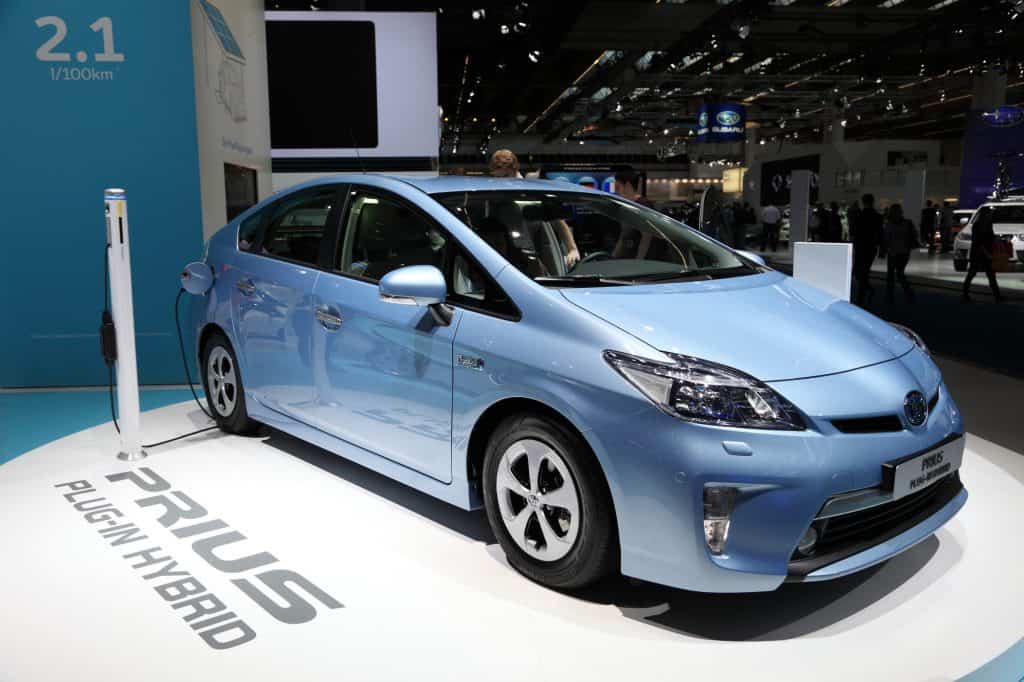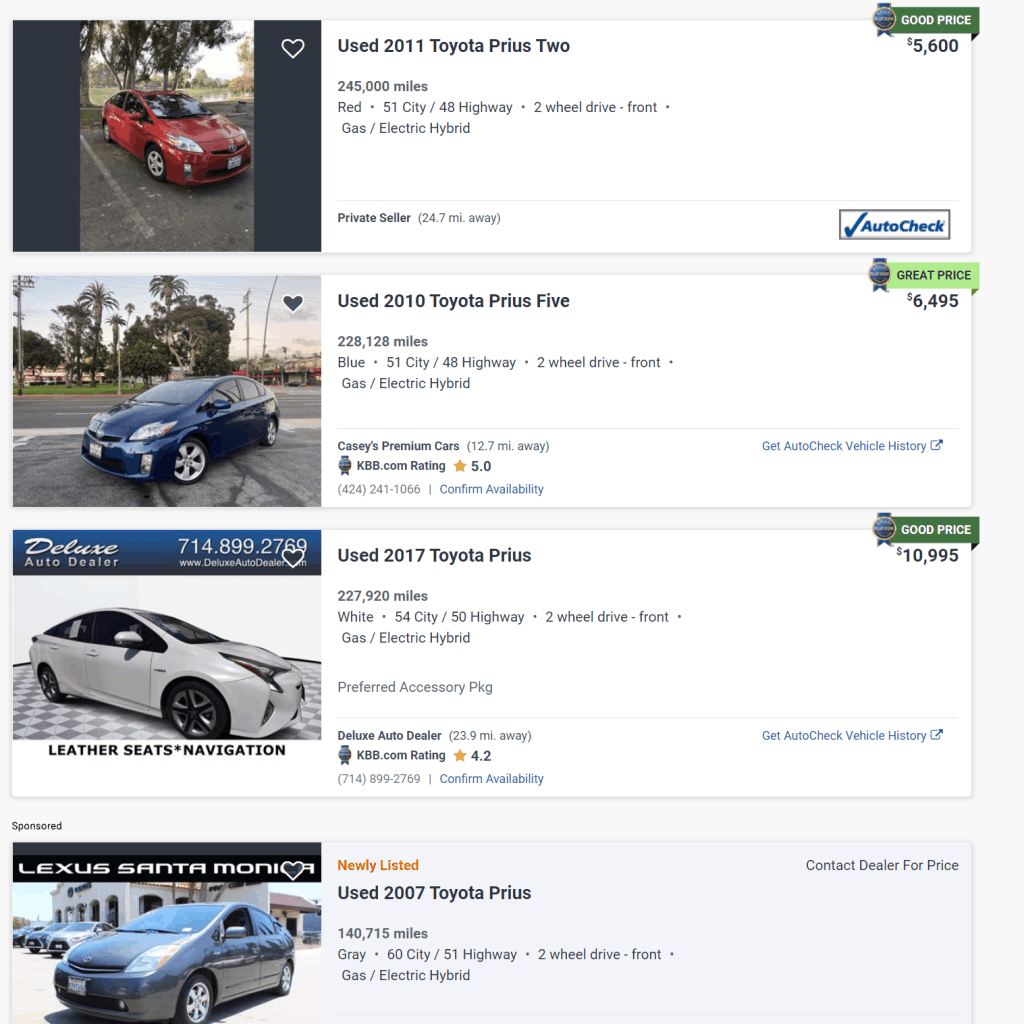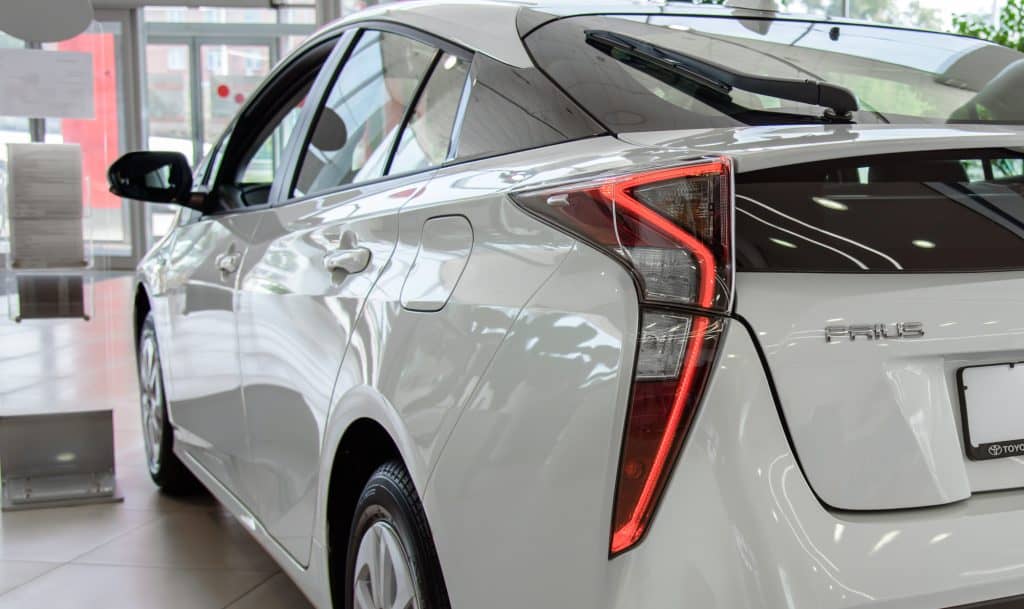The Toyota Prius was the first of a new category of vehicles that we called hybrid cars. These vehicles tried to create a best-of-both-world scenario during a time when electric cars still seemed a million miles away but we urgently needed to cut our emissions from cars on the road.
The Prius arrived in Japan back in 1997, and hit the streets of North America in 2000. In its 20 years on the road, the Prius has seen four different generations with facelifts in between. There have also been a number of other Prius models created in between. We’ll offer an overview of all available models in the next section on the Toyota Prius background.
At the core of today’s blog are questions regarding buying high-mileage Toyota Prius cars. Which generations are best to buy used, and what dangers are there? The purchase of a second-hand electric car is a hot topic right now, but most of it is focused on BEV (battery electric vehicles). Today, we’re looking at HEV cars (hybrid electric vehicles), and specifically the one that started it all.
Background: Toyota Prius Model History

The principal four generations of Toyota Prius models are as follows:
- First Generation: XW10 – 1997; NHW10 – 1997-2000; NHW11 – 2000-2003
- Second Generation: XW20 – 2003-2009
- Third Generation: XW30 – 2009-2015
- Fourth Generation: XW50 – 2015-Present (Facelifted in 2018)
On top of these main generations, a number of additional models were also released to create the wide Toyota Prius family. These include:
- Prius Plug-in Hybrid (PHEV) – Model ZVW35, introduced in 2011 at the Frankfurt Motor Show with first deliveries made in early 2012.It contained a 4.4kWh lithium-ion battery (small by the latest PHEV standards) and had an all-electric range of just 11 miles.
- Prius Prime – Developed in parallel with model XW50 (fourth generation) and released on December 15. The Prius Prime was a second-generation Prius PHEV and included a greater electric range of 25 miles.
- Prius V – Shown at the North American International Auto Show in 2011 and unveiled for the 2012 model year. The Prius V was a hatchback wagon model derived from the XW30 (third generation) model. It was available in Europe as a 7-seater but in North America only as a 5-seater.
- Prius C – Unveiled at the same 2011 auto show as the Prius V, the C was a smaller hatchback concept car and on its release in 2012 quickly became a fast-selling car in the US market. It was offered in four trim levels numbered simply One through Four, with the latter being the top level.
As the best-selling hybrid car of all time, with huge success found in the United States where something like 1.6 million Toyota Prius units have been sold (it hit 1 million sales back in 2008), you can expect the used market for Prius cars to be very full and rich indeed. Given their relative reliability and quality, there continue to be models for sale that go back to early generations.
Most people are attracted to the Prius for its extraordinary efficiency. The 2021 Toyota Prius, for example, gets 58mpg in the city and 53mpg on the highway.
Which Generation of Toyota Prius is Considered the Best?
All the various generations of Toyota Prius cars have brought something new to the mix. The first generation was equipped with a 1.5L engine outputting just 70hp. It managed 42mpg in the city and 41mpg on the highway. That was great at the time, and as we showed above, Toyota have continued to build on that with the Prius.
A first-generation Prius from 2001, running at the average annual mileage rate for an American driver, would currently have 270,000 miles on the odometer. It’s not unfathomable, and there are many stories of people driving their Prius well into the hundreds of thousands of miles. But, our core question in this section is which generation is considered the best? First, second, third or fourth?
Some might say it was the third generation that finally brought more powerful engine options. Others might say it is the current fourth generation with the highest efficiency ratings. The overall consensus, however, seems to agree that the second-generation Prius cars were the best ones.
Why is the Second-Gen Prius Considered the Best?
The second generation ran from 2003 to 2009. Every model year within that generation received a reliability rating of 5/5 from Consumer Reports except, quite notably for the 2007 generation. It also received top marks in safety from both the IIHS and the NHTSA.
The average price of a second-generation Prius in 2021 would be $5,000 or possibly less. That’s a real bargain. You could expect a model from 2009 to currently have 162,000 miles on the clock if it has been driven about the average rate in the US — 13,500 miles per year according to the Department of Transportation.
Motorandwheels.com predicts that the Toyota Prius can last about 250,000 miles when kept in top shape. That gives a lifespan of 12 to 18 years depending on how much you drive. At the average rate, it’s 18 years. If you drove up to 20,000 miles a year, then you would reach the 250,000-mile mark just after 12 years.
A 2009 Toyota Prius has just turned 12 years old in 2021. If it had the average mileage on it of 162,000 miles, then you’d still have about 88,000 miles of good motoring left, or about six and a half years until you reached 250,000. That’s assuming, of course, that the previous owner looked after the car well.
All of the above is just looking at second-generation models, which have been lauded by experts as among the very best in quality during the 20 years of Prius development. If they seem too old for you, then you can look to the third and fourth generations. If a late second-generation model can still have 6.5 years of good driving ahead of it, then a late third- or early fourth-generation model can expect many more years than that.
Battery Replacement

Among the top concerns with any kind of electric car is the need to replace the battery pack. With scary estimates of $15,000-16,000 for a new Chevrolet Bolt EV battery pack, and even $6,000 for a replacement battery on a 2012-2013 Nissan Leaf EV, it’s understandable why people fear buying pre-owned electric vehicles.
Remember, though, that the Prius is a hybrid vehicle, not a BEV. The replacement lithium-ion battery pack on a Prius is much cheaper, and remember that investing in a brand-new battery pack on a Prius is like giving it a guaranteed extension of 8 years of electrified driving life. Though the batteries are cheaper — approximately $1,000-2,000 for most second-gen Prius cars and between $2,200 and $2,600 on the third generation, for instance — they are still covered by the same 8-year warranty. Even if you ended up spending at the top end, you’d be investing in more years of ownership on your Prius, regardless of its age.
Which Generation is Best for Pre-Owned?
While it’s hard to deny the apparent greatness of the second-generation models, it seems more logical to favor the third generation when there were more engine options if you’re looking for pre-owned. For a third-generation car, you’re looking at an average mileage of 148,500 for the 2010 model, and 81,000 miles on a 2015 model.
This opinion seems widely held across the motor industry, with various sources including Bumper recommending the 2015 Toyota Prius model as a top contender.
What Are Some Common Problems with the Prius?

No matter how much the Prius was lauded for its overall reliability, there were still at least a few problems with the car. Since we think that the third-generation models would be a primary target for those looking at high-mileage Prius models, we’ll focus on this generation.
Center Multi-Function Display
This digital display has been known to fail and stop working because of poorly soldered internal connections. It can be fixed by a qualified auto shop mechanic. Ask the current owner to show service and maintenance history to demonstrate if this has had problems and been fixed before.
Fuel Gauge
The fuel gauge has been known to read inaccurately. If this is the case, you would have to take it to the dealership to have it recalibrated. It’s a relatively straight-forward repair, and wouldn’t be a disaster if you discovered it after purchase.
EGR Valve
This valve gets plugged up with carbon which can result in a Check Engine light and error code P219A. The valve needs to be removed and cleaned. It’s quite tricky to do, but if cleaning works, you can avoid having to pay for a replacement. The Check Engine light on a Prius has also been commonly linked to water pump issues, which need to be addressed quickly, too.
Plate Light Bulbs
These bulbs have been known to run hot and melt their sockets, thus burning out. You can fix this on a used Prius by replacing them with more stable LED bulbs.
Overview for Buyers
Buyers looking at pre-owned Prius cars should be mindful of these particular problems when looking at models for sale. If the model is older, then battery health is an important checking point. The best option would be a high-mileage Prius whose battery was replaced within the last 3-4 years, giving you 4-5 years of warranty-covered battery use.
Anything in the pre-owned category should also be inspected by a quality independent mechanic before any sale is concluded. If buying from a dealership, then you should get the CarFax or Auto Check report from them to learn about its service history and inspection.
Conclusion: What Mileage is “Too High” on a Pre-Owned Prius?
If we take the average figure of 250,000 miles as being a top-end mileage for a well-kept Prius, then when buying used, you ideally would want to stay at about the half-way point to that. The third-generation Prius models with average mileage range 81,000 to 148,000 miles (model years 2010-2015) form a reliable and affordable window of buying opportunity. Anything too far north of 150,000 would be risky, but still possible if the current owner has already replaced the battery recently.
To finish, here are some estimated prices for Prius models of different years, based on Edmunds ratings:
- MY 2010 – $4,991 – $11,881
- MY 2011 – $7,999 – $12,099
- MY 2012 – $6,895 – $12,881
- MY 2013 – $8,287 – $14,442
- MY 2014 – $6,800 – $20,888
- MY 2015 – $6,991 – $18,998
- MY 2016 – $12,989 – $22,700
- MY 2017 – $10,694 – $21,998
- MY 2018 – $17,995 – $27,995